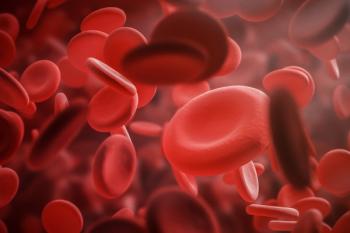
Should patients on doxycycline avoid dairy products?
This installment follows up on the Rite Aid suit involving a Lyme disease patient who charged that the chain didn't warn her about the danger of drinking milk and taking doxycycline
Clinical Q & A
Q: Should patients on doxycycline avoid dairy products?
A: An article published in Drug Topics' July 7, "
Drug interactions are commonly classified as pharmacodynamic or pharmacokinetic. Pharmacodynamic interactions involve alteration in the patient's response to a drug without a change in the drug's kinetics. Pharmacokinetic interactions involve kinetic parameters, including drug absorption, distribution, metabolism, and excretion. Pharmacokinetic interactions involving decreased absorption of the object drug often result from formation of complexes or chelates that are either insoluble or highly charged and are poorly absorbed through the gastrointestinal tract. This type of interaction is well established with certain medications that form chelates with metallic ions such as iron salts, calcium, and magnesium; thus, drug products or foods containing these ions may cause a decrease in the absorption, bioavailability, and efficacy of the object drug.
Drug interactions resulting from concomitant administration of antacids and other drugs have been reported for numerous drug classes. These interactions often involve the primary neutralizing compounds found in the antacid formulation, namely aluminum salts, magnesium salts, and calcium carbonate. This interaction type is especially evident in the case of ciprofloxacin, where concomitant administration of aluminum and magnesium antacids and ciprofloxacin results in a greater than 50% decrease in the availability of the antibiotic, which can result in treatment failure. Foods rich in these multivalent cations may result in similar interactions. Milk contains approximately 300 mg of calcium/8 oz. As such, the ingestion of 10 oz. of whole milk was reported to reduce the serum level of tetracycline by 50%-60%. Moreover, the bioavailability of tetracycline has been reported to be reduced by 40%-50% with the concurrent administration of as little as 16 ml of milk added to coffee or tea.
Although the magnitude of the interaction between milk and tetracycline is well established, the significance of such interaction involving doxycycline is less clear. A study by MacArthur et al. examined the effect of administering 200 mg of oral doxycycline hyclate with 150 ml of milk in 10 patients. The investigators, who used 150 ml of water as the control, reported that there were no significant differences between the mean serum levels of doxycycline in the milk or water groups at any sampling time. Similarly, Saux et al. evaluated the simultaneous administration of 200 mg of oral doxycycline polyphosphate with or without milk in six healthy volunteers, aged 20-29. The authors concluded that the ingestion of milk had only a mild effect on the absorption parameters of the doxycycline. In another study, Meyer et al. examined the pharmacokinetics of doxycycline in nine healthy volunteers who received capsules containing 200 mg of doxycycline with 300 ml of milk or 300 ml of water. In contrast to the two prior studies, the authors of this study reported that simultaneous administration of milk diminished the peak plasma concentration of doxycycline by 24% and the absorption by 9%-35%. The authors concluded that, like other tetracyclines, doxycycline should not be administered together with milk.
Although Pfizer's doxycycline (Vibramycin) product labeling cautions that the absorption of tetracyclines is reduced when the drug is taken with foods, especially those containing calcium, it adds that the absorption of doxycycline is not markedly influenced by simultaneous ingestion of food or milk. The manufacturer even recommends that Vibramycin be administered with food or milk if gastric irritation occurs.
In its general statement concerning tetracyclines, the AHFS Drug Information notes that the absorption of tetracycline is reduced by 50% or more in the presence of food or milk, while the absorption of doxycycline may be reduced by up to 20% by food or milk. The editors of this publication add that this effect is not usually significant.
Because of the medical-legal implications of this issue, it is advised that pharmacists follow the recommendations provided in the Food & Drug Administration-approved product labeling for the specific doxycycline product dispensed.
References are available upon request.
The authors of this article are: Joseph P. Nathan, M.S., Pharm.D., Assistant Professor of Pharmacy Practice; Lorraine A. Cicero, M.S., Pharm.D., Assistant Professor of Pharmacy Practice; and Jack M. Rosenberg, Pharm.D., Ph.D., Professor of Pharmacology and Pharmacy Practice, Director, International Drug Information Center, Arnold & Marie Schwartz College of Pharmacy & Health Sciences, Long Island University.
Jack Rosenberg. Should patients on doxycycline avoid dairy products? Drug Topics Oct. 20, 2003;147:21.
Newsletter
Pharmacy practice is always changing. Stay ahead of the curve with the Drug Topics newsletter and get the latest drug information, industry trends, and patient care tips.





























































































































